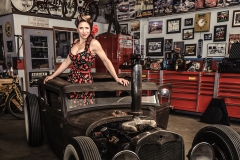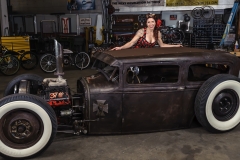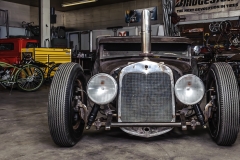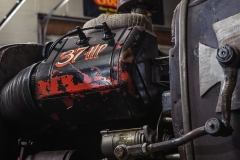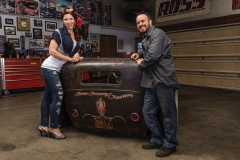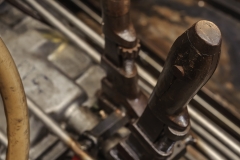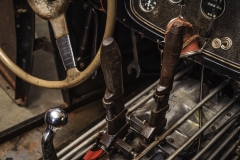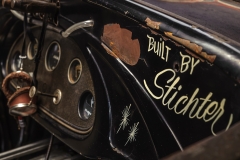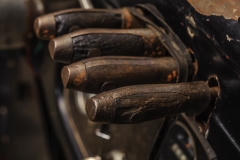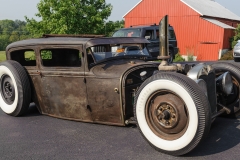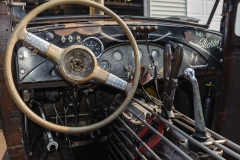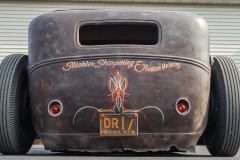Don Carrick sent us this inventive hot rod he found in Pennsylvania.
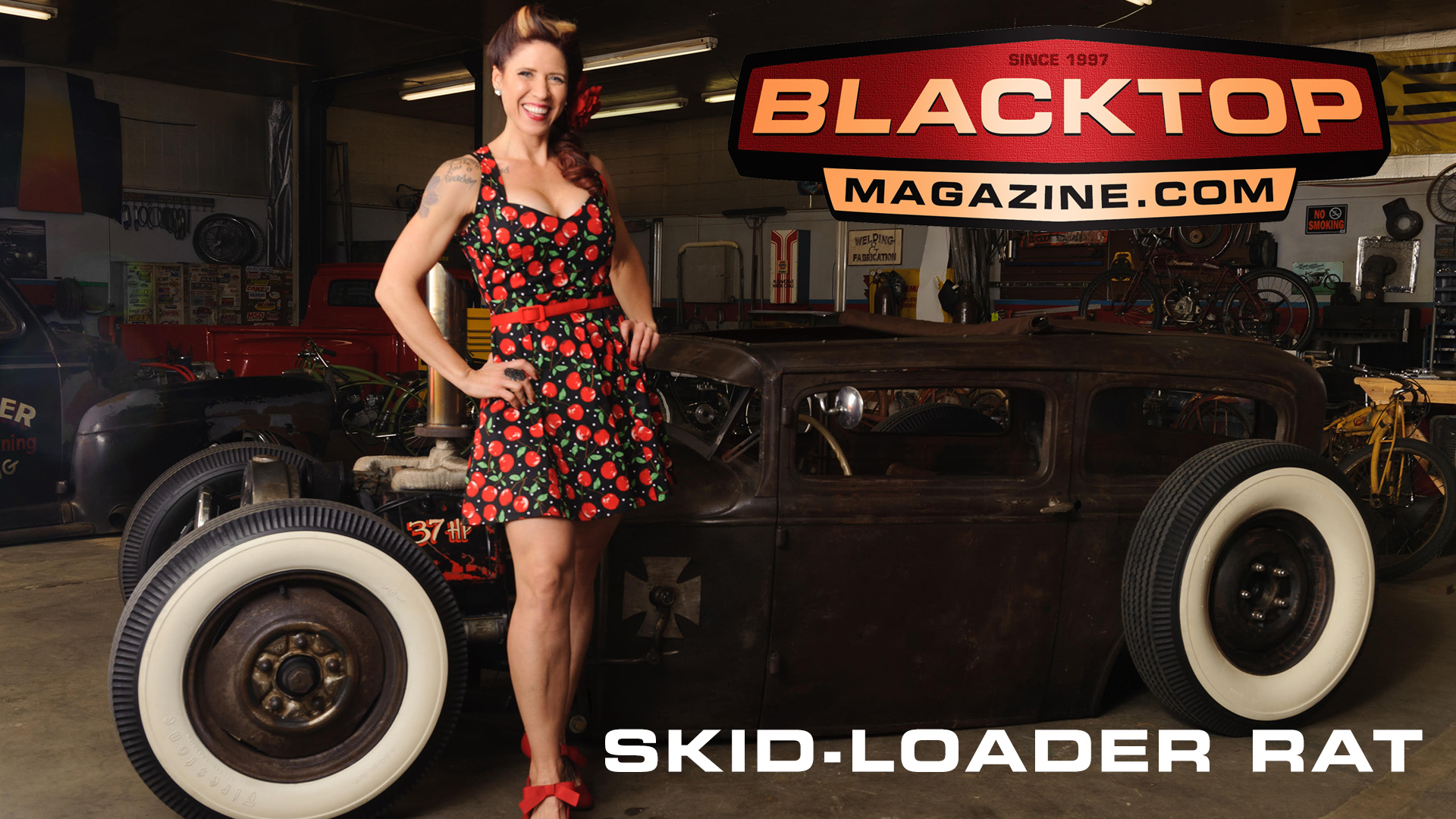 Brian Stichter owns a machine shop and sharpening business in Mohrsville, PA. His father always tinkered with cars including a ‘29 Model A Tudor. Brian’s earliest memories was with that car and he knew someday he would own one.
Brian Stichter owns a machine shop and sharpening business in Mohrsville, PA. His father always tinkered with cars including a ‘29 Model A Tudor. Brian’s earliest memories was with that car and he knew someday he would own one.
The time came when a buddy called and said to come check out this 4-door sedan. The wooden frame was rot, the panels were beat, the original front axle and suspension up front were all that remained. $800.00 later he had the carcass at home and started cutting. That’s when he called his dad to do some of the heavy work. Dad got busy chopping and shortening the car. They used the passenger rear doors and matched it to the rear window. The back door handle sheet metal cutouts were left as evidence of the four door.
Brian cleaned up the bare metal areas with layers of paint, then rubbed on some stripper, dirt, a rusting solution, then torched areas for a desired texture.
The frame was hand built with C-Channel boxed and pie cut to make the arches. He built all the suspension and front axle. Airbags in the rear and air shocks up front are controlled by a manual valve setup with a compressor and tank used for an air horn kit.
It’s the motor that makes this car especially unique. An old Case skid loader was sitting in his yard. The air-cooled V-4 made about 37 horsepower. Perfect for this lightweight rod. Now to make it work. The engine revs at 2500 rpm and after doing some math and consulting a mechanical engineer friend he found that a T5 from a 3rd Gen Camaro fit the build. Using the 3 speed transmission in second gear and the 5 speed transmission in first gear gives a ratio of 5.22. The rest of the ratios worked out perfectly on paper. The Wisconsin engine originally ran a driveshaft directly off the crank. With needing a clutch, this created another challenge. Brian machined a hub to accept a Kubota flywheel and pressure plate, turning down the original 1941 Ford clutch to fit. The 5 speed input shaft was machined to fit the tail shaft of the Ford 3 speed. All of this is exposed by an open trans tunnel and bell housing.
The interior features a 1930 Buick dash, a clear hose running through the dash is hooked to a flow valve to control the amount of water that gets fed to the engine to keep it cool. The pedals were old Mode A wrenches. The two seats were fabricated from rolled sheet metal.
The first test run ran so hot the spark plugs blew out the aluminum head! A few adjustments and the car is a blast to drive. It gets a lot of attention at the shows and Brian even found a Russian forum talking about the car.
Photos/Story submitted by Don Carrick, Studio 413 Photography.

